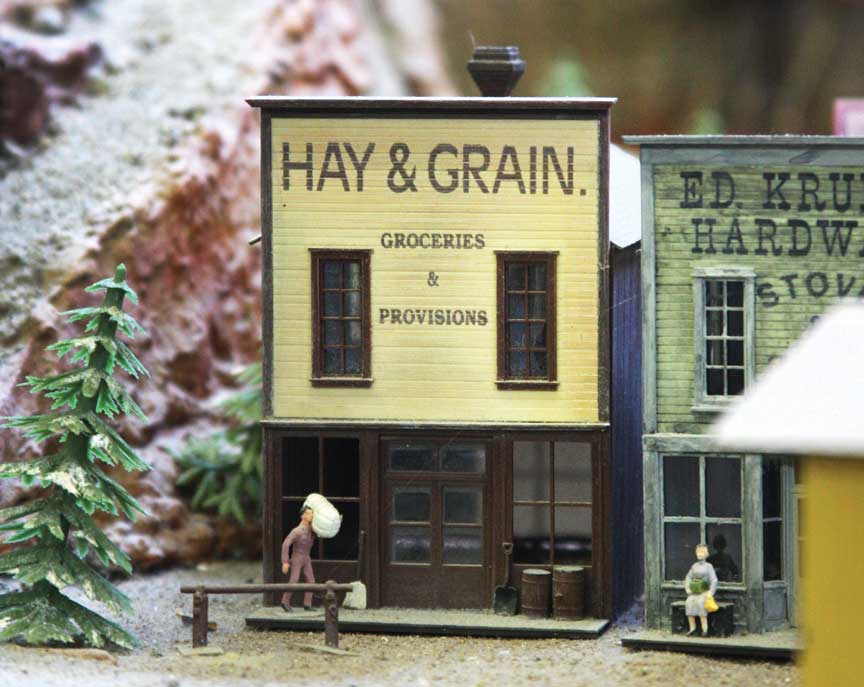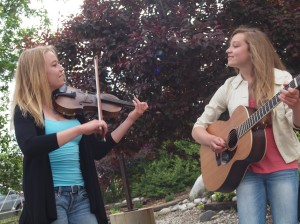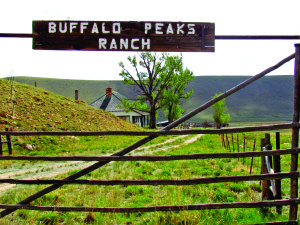by Judith Reese, Photos by Mike Rosso
“Fabulous! Colorado’s Best Secret Attraction,” declares an entry in the Buena Vista Model Railroad guestbook. It’s in the hand of well-known history professor Tom Noel, and now the secret is out. The delightful diorama, housed on the top floor of the BV Heritage Museum, depicts in miniature the history, topography and layout of the Upper Arkansas River Valley, capturing the roughly 140 miles from Tennessee Pass to the Royal Gorge. Along the way, model “iron horses” wind their way through replicas of area towns and industry as they appeared during the heyday of mining and railroads, documenting the region between roughly 1890 and 1910.
The exhibit was the brainchild of a group of “tinkerers,” says George Barnett, president of the BV Historical Society and oftentimes the “engineer” of the model locomotive snaking a continuous loop through the display. “I’m ‘that railroad guy,’” he adds. Those tinkerers, says Barnett, were the original members of the BV Model Railroad Society formed in 1984. “They were a bunch of old men who all liked model railroads – lawyers, teachers, bakers – all attracted by mechanical stuff.” The over 400 structures in the display were “scratch built” out of plastic and wood from over 80 actual photographs and drawings.
“The project took seven years to complete. Many of the buildings were constructed in homes, then placed on the platform,” recalls Chaffee County historian Suzy Kelly. An artist, Kelly painted all the exhibit backdrops, drawing from her own photographs and some of the 2,000 photos from the museum collection.
 The exhibit showcases the three railroads that served the region. The Denver, South Park and Pacific and the Denver and Rio Grande were both narrow gauge, and the Colorado Midland was standard gauge.
The exhibit showcases the three railroads that served the region. The Denver, South Park and Pacific and the Denver and Rio Grande were both narrow gauge, and the Colorado Midland was standard gauge.
“The Society members had to agree on what to build and the placement of each structure – using some artistic license,” explains Barnett. “Can you imagine?”
In the northeast segment, the l:87 scale locomotive travels back in time to Leadville during the last days of the mining boom. The layout features the Matchless Mine, made famous through tales of Tabor and Baby Doe, along with smelters and the “red-light district” cabins. “With functional electric lights – only for adult visitors,” Barnett insists. Below the model of the Hagerman Trestle, which linked Leadville and Aspen, Society hobbyists fashioned an off-the-trestle boxcar reminiscent of old-time disasters. Leadville rests beneath Kelly’s mural of Mount Elbert and Mount Massive.
Traveling south, the train moves through Granite, a mining supply town. For a touch of humor, the original builders included small “I Spy” scenes. In one, a man, pants down, sits on a bench while a bear approaches from behind. In another, hobos around a campfire cook up a hobo stew, showcasing another facet of railroad life. The Mosquito Range and Buffalo Peaks complete the sequence.
Buena Vista’s Main Street occupies the center of the exhibit. Many of the buildings depicted no longer exist, but the Society constructed replicas to document the town’s history. Of note are the Princeton Hotel (a Victorian which burned three times), the Lariat Bar, the Court House and the first building in the prison complex.
Museum manager Tom Tomson explains the effect of area geography on the railroads. “The two narrow gauges gobbled up the land by the Arkansas,” he says, “so the Midland – the Johnny-Come-Lately –had to build four tunnels up in the hills above BV.” In the diorama, a horse and “hack” transport travelers from the depot above the town down to Main Street. “The winter of 1899-1900 was the worst winter here, with 30 to 40 feet of snow on the tracks,” continues Tomson. “Trains got stuck for 77 days. Animals froze. People hitchhiked out.”
The facsimile of Salida captures two significant industries from the epoch. The model shows one of the three roundhouses from the 1890s, when Salida was second only to Denver as a Colorado railroad hub. The roundhouses exist today only in photos and the exhibit. Salida’s landmark smokestack dominates the room, symbolizing the fate of the mining industry. In response to farmers and ranchers who had become concerned about the thick haze from valley smelters, the Denver and Ohio Smelter build the 350-foot chimney in 1915 so that high winds would dispel the smoke. The mining industry, however, soon collapsed. Barnett recalls the improbable story of the 1918 dance held atop the tower: “Photos show ladies in gowns and an orchestra,” he says. “They must have had a hoist. “
The train passes Mount Princeton and Mount Shavano, with its angel, near the west wall. “The group wanted someone who could climb up on the display to paint,” says Kelly. “They wanted the ghost town of St. Elmo to look like it was way up in Chalk Creek, so I painted it in the doorway for depth.” Beneath Kelly’s backdrop, the aerial tram at the Mary Murphy Mine, originally operated through gravity, now moves by electric control.
The exhibit ends at the Royal Gorge. To capture the immense task of building the Hanging Bridge, the “tinkerers” constructed a mountain through which the model train moves, delivering the familiar sound of a locomotive gaining elevation. “The Santa Fe and the Denver and Rio Grande battled for rights to build the track through that canyon,” adds Tomson.
Kelly recalls that the Society held bake sales and other fundraisers to support the project, and now there is a need to update and restore the model. “People want to see it run,” she says. “They would like a train whistle to blow.” Kelly fondly shares the names of the original Society members: Art Williams, who made a video about the model, along with Bob Johnson, Chet Loback, Dean McMurtry and Lauren Buell. Over the years, Williams and Jim Lindeburg kept the model operating. The Society gifted the exhibit to the Historical Society in 1996.
The building which houses the museum and railroad model formerly served as the Chaffee County Courthouse from 1882 to 1932, when the county seat moved to Salida. The building functioned as a school until 1972. Then, in 1974, the city purchased the building. The Museum acquired it in 2003 for $1. Today because of the lack of insulation, the museum is closed during the winter.
The BV Heritage Museum and Model Railroad is at 506 East Main, Buena Vista. For more information, call 719-395-8458 or visit www.buenavistaheritage.org.
Judith Reese lives in Nathrop, near Buena Vista, and recalls that electric smell of model trains from childhood.




